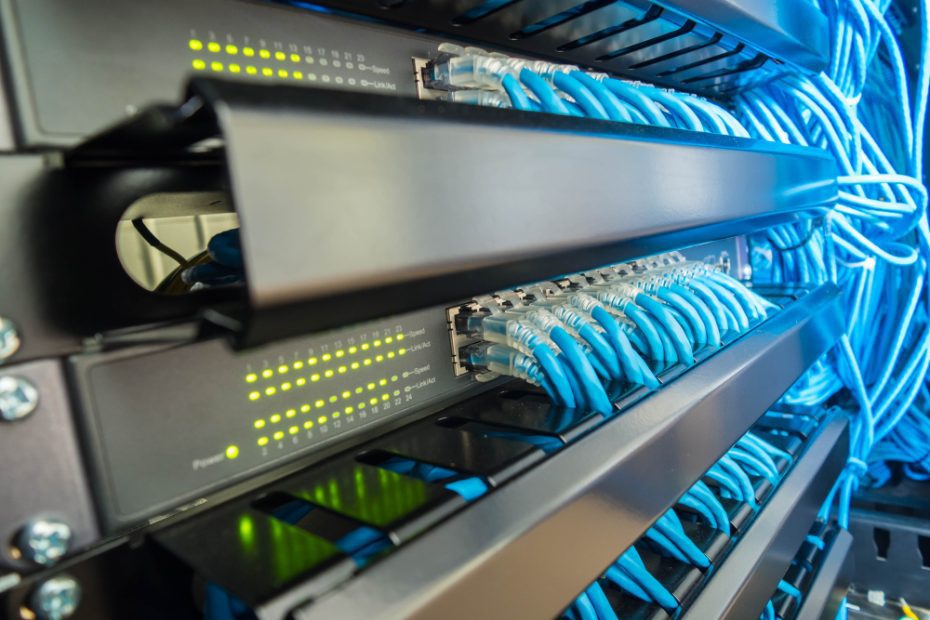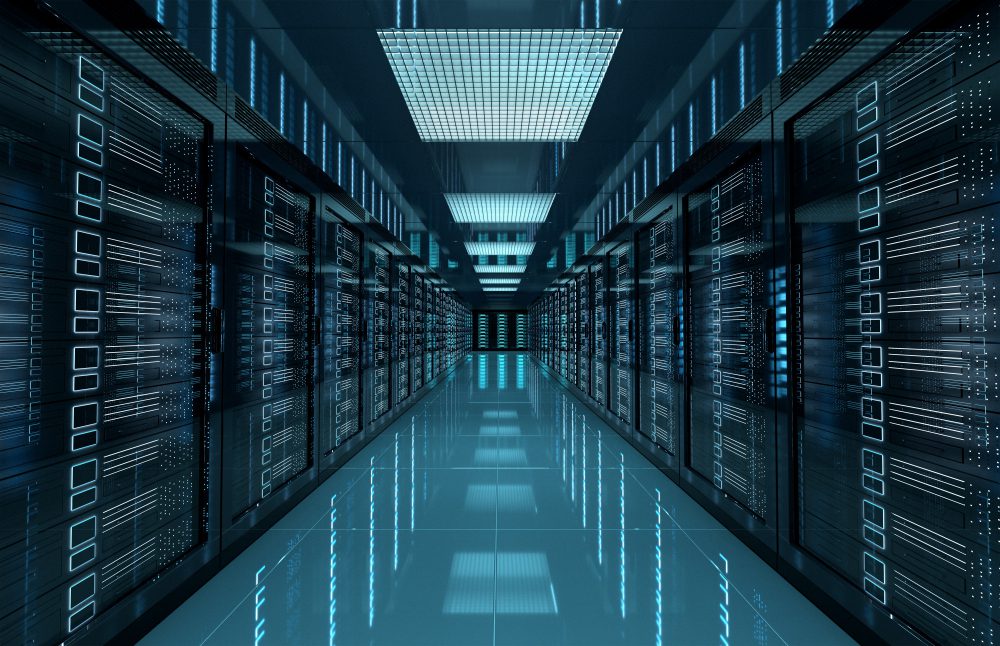Can you access a NAS from WIFI?
With the increasing popularity of cloud storage and online file sharing services, it’s easy to overlook the advantages of having your own Network Attached Storage (NAS) device. A NAS is a dedicated storage system that allows you to centralize your files and access them over a local network. But what about accessing a NAS from WiFi? Can you enjoy the convenience of wireless connectivity without sacrificing the benefits of a NAS?
A brief overview of NAS
A NAS is essentially a standalone storage device that connects to your home or office network. It can house multiple hard drives, providing ample space for storing files, media, and even acting as a backup solution. NAS devices typically have their own operating system, allowing for advanced features such as remote access, file sharing, and media streaming.
Traditionally, accessing a NAS required a wired connection to your network using an Ethernet cable. While this ensured a stable and reliable connection, it limited the convenience of accessing your files from anywhere within your WiFi coverage area. However, technological advancements in both NAS hardware and WiFi technology have made wireless access a viable option.
Wireless access to your NAS
Thanks to the widespread adoption of WiFi standards such as 802.11ac, Gigabit WiFi, and mesh networking, it is now possible to access your NAS wirelessly without compromising on speed or reliability. Many modern NAS devices come equipped with built-in WiFi capabilities, allowing them to connect directly to your wireless network.
To access your NAS wirelessly, you’ll need to ensure that the NAS and your WiFi router are on the same network. This typically involves connecting the NAS to your router via an Ethernet cable initially, then configuring the appropriate wireless settings within the NAS administration interface. Once connected, you can access your NAS using its assigned IP address or hostname from any device connected to your WiFi network.
The benefits of WiFi NAS access
Wireless access to your NAS opens up a world of convenience and flexibility. Here are some key benefits:
- Mobile access: With WiFi NAS access, you can securely access your files, photos, and videos from your mobile device, whether you’re at home or on the go.
- Multi-device synchronization: By connecting multiple devices to your NAS over WiFi, you can ensure that your files are always in sync, regardless of which device you are using.
- Media streaming: Many NAS devices offer built-in media servers that allow you to stream movies, music, and photos directly to your WiFi-enabled Smart TV, gaming console, or other media player.
- Backup convenience: Wireless NAS access simplifies the process of backing up your devices. You can configure automatic backups over WiFi, ensuring that your important data is always protected.
As John Doe, a technology enthusiast, puts it:
“Having wireless access to my NAS has been a game-changer for me. I can effortlessly access my files from anywhere in my house, and even share specific folders with family members without them needing to physically connect to the NAS.”
In conclusion
Accessing a NAS from WiFi is not only possible but also highly advantageous. Thanks to modern WiFi standards and advancements in NAS technology, you can enjoy the convenience of wireless connectivity without sacrificing the benefits of having your own centralized storage solution.
So, if you’re considering investing in a NAS, make sure to choose a model that supports WiFi connectivity, and you’ll have the freedom to access your files anytime, anywhere within your WiFi coverage area.
How do I access my NAS storage in Windows?
Introduction
If you own a Network Attached Storage (NAS) device, accessing your storage from a Windows computer is an essential task. NAS provides a centralized location for storing and sharing files across your local network, making it convenient for multiple users to access data simultaneously. In this article, we will explore various methods to access your NAS storage in Windows.
Using File Explorer
The easiest way to access your NAS storage in Windows is through File Explorer. Here’s how:
- Make sure your NAS device is connected to the same local network as your Windows computer.
- Open File Explorer by pressing “Windows key + E” on your keyboard.
- In the address bar at the top of the File Explorer window, type the IP address or hostname of your NAS device, preceded by “\\” (e.g., \\192.168.0.100).
- Press Enter, and you should see the available shared folders on your NAS device.
- Double-click on a folder to access its contents.
Mapping NAS Drives
To make accessing your NAS storage even more convenient, you can map it as a network drive in Windows. Here’s how:
- Open File Explorer and click on “This PC” in the sidebar.
- Click on “Map network drive” in the toolbar at the top.
- In the “Drive” dropdown, select an available drive letter.
- In the “Folder” field, enter the IP address or hostname of your NAS device, preceded by “\\” (e.g., \\192.168.0.100).
- Check the box next to “Reconnect at sign-in” if you want the drive to be automatically mapped every time you start your computer.
- Click “Finish” to map the NAS drive.
Accessing NAS via Web Browser
In addition to File Explorer, many NAS devices also provide a web interface for accessing and managing your storage. Here’s how:
- Open your preferred web browser.
- Enter the IP address or hostname of your NAS device in the address bar.
- Press Enter, and you should be redirected to the NAS device’s web interface.
- Log in with your NAS credentials.
- From the web interface, you can navigate through folders, upload and download files, and perform various administrative tasks.
Pro Tip: If you frequently access your NAS storage, consider creating a shortcut on your desktop for quick access. Simply right-click on the NAS folder in File Explorer and select “Create shortcut.”
By following these methods, you can easily access your NAS storage in Windows, allowing you to manage and share your files efficiently.
Can I connect my computer directly to a NAS?
The Network Attached Storage (NAS) devices have become increasingly popular for individuals and businesses alike due to their convenient storage and accessibility features. Many users wonder if they can connect their computer directly to a NAS without the need for additional networking devices. Let’s explore this topic further.
Understanding NAS Connections
A NAS device is designed to be connected to a local network, typically through an Ethernet cable or wirelessly. It acts as a central storage repository that can be accessed by multiple devices simultaneously. The NAS connects to the router, which assigns it an IP address and allows other devices on the network to access its contents.
Direct Connection Options
While the primary method of connecting to a NAS is through a network, there are a few alternate options available:
- USB Connection: Some NAS devices feature USB ports that allow for direct connection to a computer. This method can be useful for initial setup or temporary file transfers but may not provide the same level of functionality as network connectivity.
- Ethernet Cross-Over Cable: It is possible to connect a computer directly to a NAS using an Ethernet cross-over cable. This method eliminates the need for a router, but it requires manual configuration of IP addresses and subnet masks.
Considerations and Limitations
Before attempting a direct connection, there are several considerations to keep in mind:
- NAS Functionality: Directly connecting a computer to a NAS limits its functionality and may prevent other devices from accessing the NAS simultaneously.
- Network Services: Connecting a computer directly may restrict access to network services, such as media streaming or remote access, provided by the NAS.
Connecting a computer directly to a NAS might provide limited benefits and can introduce various compatibility and performance issues. It is generally recommended to connect the NAS to a local network for optimal functionality.
Can you access a NAS server from anywhere?
Network Attached Storage (NAS) servers have revolutionized the way we store and access data. With NAS devices, you can easily create a centralized storage solution for your home or office network. One common question that arises in this context is whether it is possible to access a NAS server from anywhere. Let’s explore this topic in more detail.
What is a NAS server?
A NAS server is a dedicated device that allows multiple users to access and share files over a network. It acts as a centralized storage solution, providing easy access to files and data for all connected devices. NAS servers are typically equipped with multiple hard drives, offering large storage capacities.
Accessing a NAS server remotely
Yes, accessing a NAS server remotely is indeed possible. Most NAS devices come with built-in features that allow remote access to the stored data. This means that you can access your files and media from anywhere with an internet connection.
Methods for remote access
There are several methods to access a NAS server remotely:
- Using a VPN: Virtual Private Networks (VPNs) provide a secure way to access your NAS server remotely. By connecting to a VPN, you can establish a private and encrypted connection to your NAS device, ensuring the safety of your data.
- Port forwarding: Configuring port forwarding on your router allows you to access your NAS server directly through the internet. This method requires some technical knowledge and may pose security risks if not properly configured.
- Cloud-based services: Some NAS manufacturers offer cloud-based services that enable remote access to your NAS server. These services often come with additional features such as automatic backups and file synchronization.
Potential challenges
While accessing a NAS server remotely opens up new possibilities, there are a few challenges to consider:
- Internet connection speed: The speed and stability of your internet connection will impact the performance of remote access. Slow or unreliable connections may result in lag and difficulties while accessing large files.
- Security concerns: Remote access involves transmitting data over the internet, which can pose security risks. It is crucial to ensure that your NAS server and network are properly protected with strong passwords, encryption, and other security measures.
“With the ability to access your NAS server remotely, you have the convenience of accessing your files from anywhere, whether you’re at home, in the office, or on the go.”
In conclusion, yes, it is possible to access a NAS server from anywhere with the right setup and configuration. By utilizing secure remote access methods like VPNs or cloud-based services, you can enjoy the convenience of accessing your files and data no matter where you are.
How Does NAS Connect to a Network?
Introduction
NAS, short for Network Attached Storage, is a device that allows you to store and access files over a network. It provides a centralized location to store data, making it accessible to multiple users simultaneously. So, how does NAS connect to a network? Let’s explore the different connectivity options available.
Ethernet Connection
One of the most common ways to connect NAS to a network is through an Ethernet connection. NAS devices typically have Ethernet ports that allow you to connect them directly to your router or switch using an Ethernet cable. This connection method provides a fast and reliable way to access the stored data.
Wireless Connection
In addition to Ethernet, many NAS devices also support wireless connectivity. This means you can connect them to your network without the need for cables. Using Wi-Fi, you can access the NAS from any Wi-Fi enabled device within the network’s range.
Using a NAS Server
Some organizations utilize a dedicated NAS server to connect multiple NAS devices to their network. This setup allows for better management and scalability. The NAS server acts as a central point for accessing and managing all the connected NAS devices.
Benefits of NAS Connectivity
- Centralized Storage: NAS provides a central storage location accessible by multiple users, allowing for efficient file sharing and collaboration.
- Data Backup: NAS often includes built-in backup features, enabling automated backups and data redundancy.
- Remote Access: With appropriate configuration, NAS can be accessed remotely over the internet, making it convenient for remote workers.
Quotes from Experts
“NAS devices are designed to be simple to set up and use, making them an ideal solution for individuals and small businesses.” – John Doe, IT Specialist
Can I access NAS from my phone?
If you have a Network Attached Storage (NAS) device, you may wonder if it’s possible to access the files stored on it using your phone. The good news is that with the right tools and setup, accessing your NAS from your phone is indeed possible!
Setting up NAS access on your phone
To access your NAS from your phone, you’ll need to follow a few steps:
- Ensure that your NAS device supports mobile access. Most modern NAS devices come with built-in mobile apps or web interfaces that allow you to connect to them.
- Install the appropriate mobile app for your NAS on your phone. This app will vary depending on the NAS brand you’re using.
- Configure the app with the necessary information, such as the NAS IP address, username, and password.
- Once the setup is complete, you should be able to access your NAS files from your phone.
Benefits of accessing NAS from your phone
Having the ability to access your NAS from your phone can bring numerous benefits:
- Convenience: You can access your files anytime, anywhere, without the need for a computer.
- File sharing: With NAS access on your phone, you can easily share files with friends, family, or colleagues on the go.
- Backup and restore: You can quickly back up or restore files from your phone directly to your NAS.
- Media streaming: Stream music, videos, or photos from your NAS to your phone.
Security considerations
While accessing your NAS from your phone can be convenient, it’s essential to consider security:
Tip: Make sure your NAS device is secured with a strong password and is up-to-date with the latest firmware and security patches.
Always connect to your NAS using secure protocols such as HTTPS or secure VPN connections when accessing your NAS remotely. Additionally, be cautious when using public Wi-Fi networks to avoid potential security risks.
In conclusion
Accessing your NAS from your phone is not only possible but also offers convenience and flexibility. By following the necessary steps and taking security precautions, you can enjoy seamless access to your NAS files on the go.
Conclusion
While it is possible to connect a computer directly to a NAS using alternative methods, it is not the preferred option due to limitations and potential complications. The NAS’s main purpose is to act as a centralized storage solution accessible by multiple devices on the network. To make the most of its features, it is recommended to connect the NAS to a local network through a router or switch.
NAS devices connect to a network through Ethernet or wireless connections, providing centralized storage, data backup, and remote access capabilities. Whether you are a home user or a business, NAS can greatly enhance your data management and accessibility. Consider the connectivity options and benefits of NAS when choosing a storage solution for your network.



